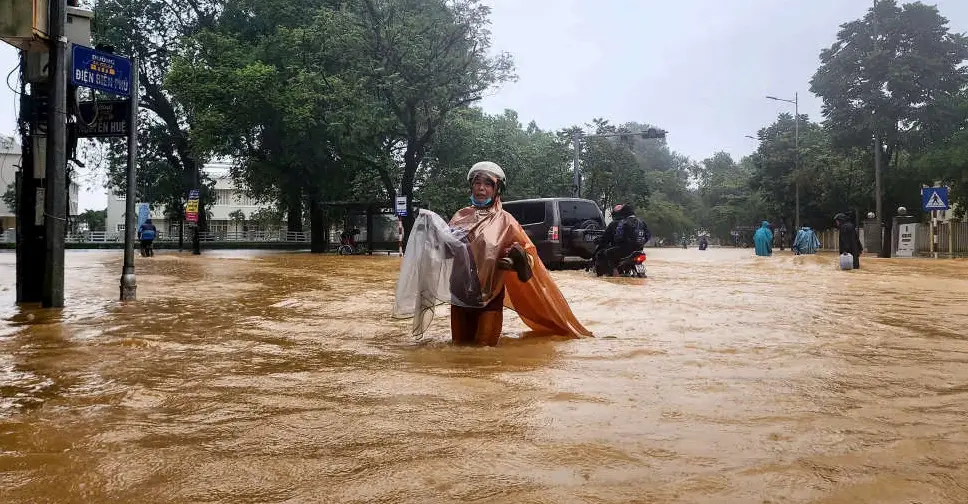Central Vietnam is reeling from a catastrophic weather crisis. A week of relentless, record-breaking rainfall has tragically driven the confirmed death toll to 40, authorities announced Tuesday. The number of fatalities is still expected to climb. Worse still, a new, powerful storm is currently hurtling toward the already ravaged coastal region.
Torrential downpours have completely overwhelmed Vietnam’s central coast. Major city streets were instantly turned into running canals. Riverbanks burst, and cherished historic sites were inundated.
In just one 24-hour period, an astonishing 1.7 meters (5 feet 6 inches) of rain fell. This marks the highest rainfall ever recorded nationally in a single day.
The Rising Human Cost and Immediate Response
The environment ministry’s disaster management agency confirmed that deaths occurred across several provinces: Hue, Da Nang, Lam Dong, and Quang Tri. Six people are still officially missing.
Yousaf Hammad, a spokesman for the disaster management agency, reported on the initial response efforts. Most of the 320 injured individuals sustained only minor injuries.
Consequently, many were released after receiving treatment. Rescue and emergency aid teams were quickly deployed to the ground. Large-scale search and recovery operations have commenced immediately.
Typhoon Kalmaegi Threatens New Disaster
The relentless onslaught of extreme weather is forecast to continue without reprieve. The national weather bureau projects that Typhoon Kalmaegi will make landfall early Friday morning.
Vietnam typically sees heavy rainfall seasonally. However, scientists link the clear pattern of human-driven climate change to making these extreme events more frequent and destructive. While Vietnam usually faces about ten tropical storms annually, Kalmaegi is set to be the 13th storm of 2025.
The typhoon is currently lashing the Philippines, where it has already caused at least two deaths and displaced hundreds of thousands. Forecasters warn Kalmaegi could strike the Vietnamese coast with brutal winds of up to 166 kilometers per hour as early as Thursday.
Widespread Destruction to Homes and Livelihoods
As of Tuesday, the central region remained paralyzed by the past week’s extreme flooding. Access to some remote areas is completely cut off due to massive landslides blocking major roads.
The disaster agency provided a grim snapshot of the national destruction:
- Nearly 80,000 houses are still submerged by floodwaters.
- Over 10,000 hectares of essential food crops have been destroyed.
- More than 68,000 livestock and poultry were tragically killed or swept away by the water.
RELATED NEWS: Deadly 6.3 Magnitude Quake Shakes Northern Afghanistan






